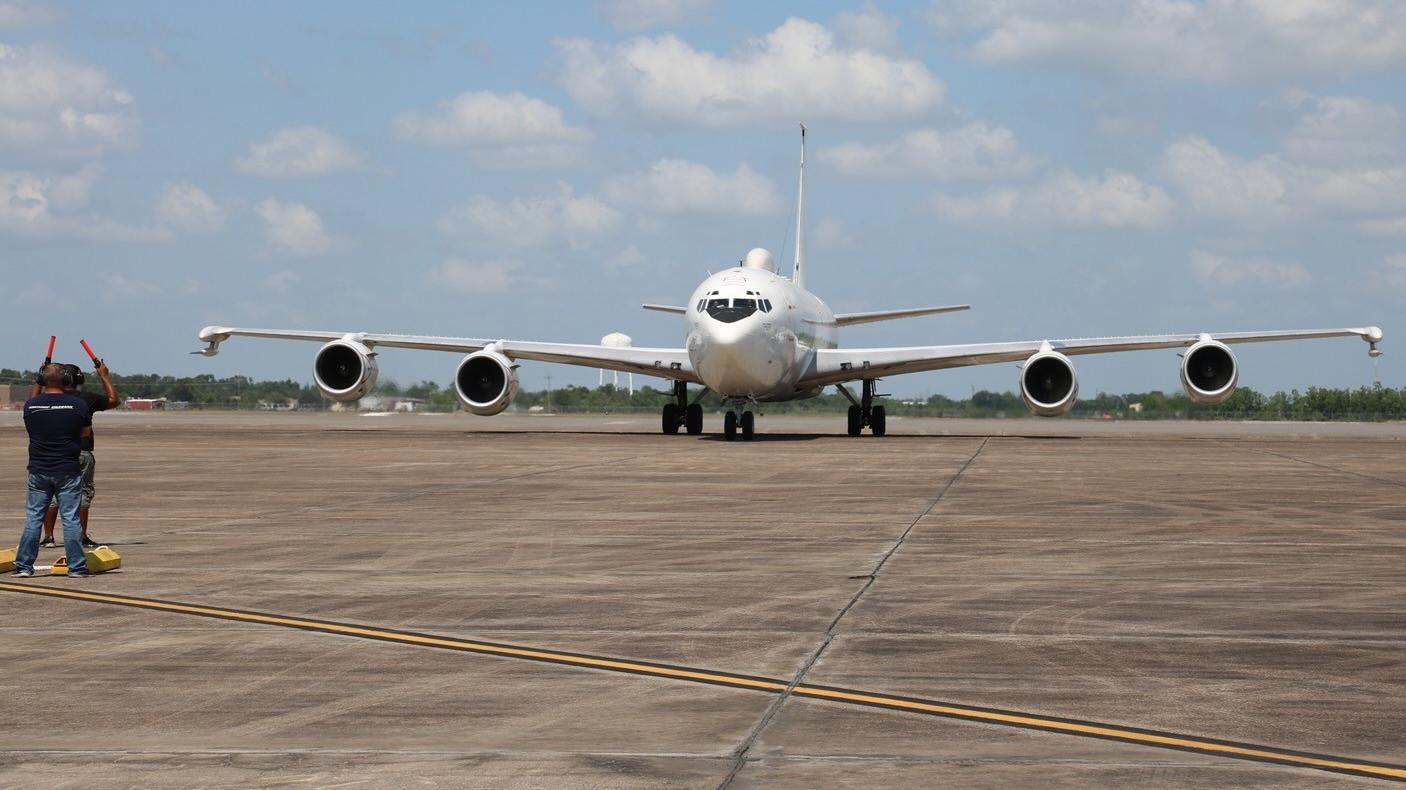The first E-6B Mercury arrived at Northrop Grumman Corporation’s Aircraft Maintenance and Fabrication Center in Lake Charles, Louisiana for Block II modification earlier this month. The work is part of an Integrated Modification and Maintenance Contract (IMMC) awarded in February, which focuses on fielding improved airborne strategic communications sooner. The Block II upgrade consists of six modifications to improve the aircrafts’ command, control and communications functions connecting the National Command Authority with U.S. strategic and non-strategic forces. Faster turnaround times with the upgrades will lead to more aircraft being available with increased capabilities for the warfighter.
“This is an important event because it’s the first time a single company will be responsible for executing the entire installation. NGC Lake Charles built an integrated modification schedule that implements efficiencies and lessons learned from previous efforts. This contract streamlines how we are fielding our capability upgrades,” said Bob Stailey, Airborne Strategic Command, Control, and Communications Program Office (PMA-271) E-6B deputy program manager.
“I’m very proud of the entire team and all the work they’ve done to get to this point. It’s taken a big effort and they are constantly looking for ways to identify and overcome any challenges. Our number one priority is ensuring SCW-1 accomplishes its mission providing assured airborne strategic communications and that the president is always connected to his nuclear forces,” said Capt. Adam Scott, PMA-271 program manager.

The previous modification contract was executed by two separate commercial activities and one organic activity with a 19-month average turnaround time. With this new IMMC, the team anticipates ultimately achieving a six-month modification turnaround timeline. Driving toward the timeline reduction goal has been a team effort with partnership between the program, Naval Air Warfare Center Aircraft Division, Fleet Readiness Center Southeast, Defense Contract Management Agency, Strategic Communications Wing One (SCW-1), Fleet Air Reconnaissance Squadron 4, Navy liaison officers and program representative’s onsite in Lake Charles.
The Boeing E-6 Mercury (formerly Hermes) is an airborne command post and communications relay based on the Boeing 707. The original E-6A manufactured by Boeing’s defense division entered service with the United States Navy in July 1989, replacing the EC-130Q. This platform, now modified to the E-6B standard, conveys instructions from the National Command Authority to fleet ballistic missile submarines (see communication with submarines), a mission known as TACAMO (“Take Charge And Move Out”). The E-6B model deployed in October 1998 also has the ability to remotely control Minuteman ICBMs using the Airborne Launch Control System. With production lasting until 1991, the E-6 was the final new derivative of the Boeing 707 to be built.
















